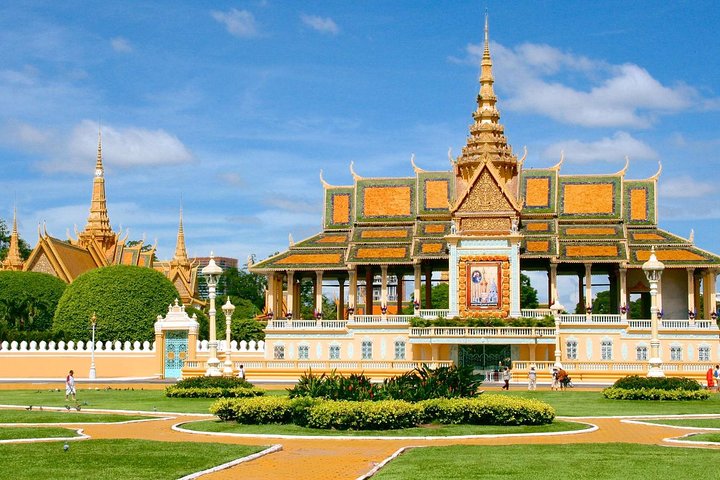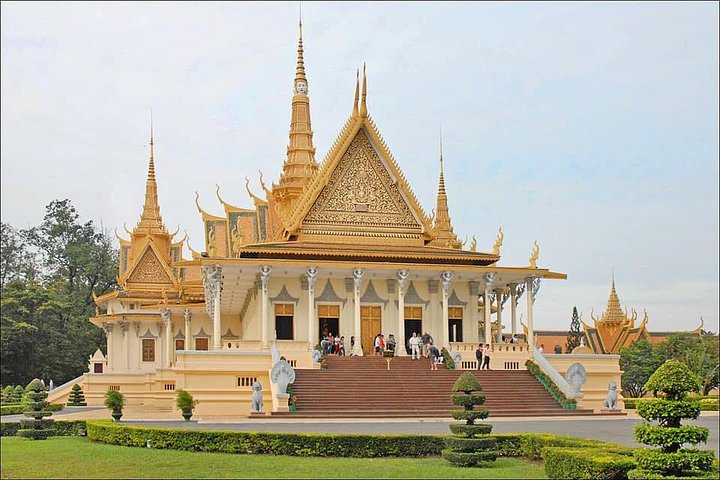Exploring Cambodia’s Past: A Journey Through the Killing Fields and Tuol Sleng Museum
Eager to explore Cambodia’s history, I embarked on the Killing Fields & Toul Sleng Genocide Museum Tour in Phnom Penh. With the guidance of Mr. Lun Huot, I delved into the somber past of the Khmer Rouge regime, gaining insights and making lasting memories.
A Journey Through Cambodia’s Dark History
When I first set foot in Phnom Penh, I was eager to delve into the rich tapestry of Cambodia’s history. As a budget traveler, I often seek out experiences that are both affordable and deeply enriching. The Killing Fields & Toul Sleng Genocide Museum Tour was a perfect fit for my itinerary. I had heard about the profound impact of this tour, and I was ready to explore the somber chapters of Cambodia’s past.
The day began with a warm welcome from Mr. Lun Huot, my driver and guide for the day. His reputation preceded him, and I was not disappointed. As we drove through the bustling streets of Phnom Penh, Mr. Huot shared stories of his own experiences and insights into Cambodian culture. His fluent English made the conversation easy and engaging, and I found myself learning more than I had anticipated.
Our first stop was the Tuol Sleng Genocide Museum, a former high school turned prison during the Khmer Rouge regime. Walking through the corridors, I was struck by the haunting photographs and personal stories of the victims. It was a sobering experience, one that left a lasting impression on me. Mr. Huot’s knowledge of the history added depth to the visit, and I appreciated his sensitivity in guiding me through such a poignant site.
Reflecting at the Killing Fields
After the museum, we made our way to the Choeung Ek Genocidal Center, commonly known as the Killing Fields. The drive was a time for reflection, and Mr. Huot provided a thoughtful narrative of the events that transpired there. As we arrived, the serene landscape belied the horrors that had occurred. The memorial stupa, filled with the skulls of victims, stood as a stark reminder of the atrocities committed.
Walking through the fields, I felt a profound sense of sorrow and respect for those who had suffered. The audio guide, available in multiple languages, offered detailed accounts of the history, but it was Mr. Huot’s personal anecdotes that truly brought the past to life. His compassion and understanding made the experience all the more meaningful.
Despite the heavy subject matter, the tour was an essential part of understanding Cambodia’s history. It was a reminder of the resilience of the human spirit and the importance of remembering the past to build a better future. As we left the Killing Fields, I felt a renewed sense of gratitude for the opportunity to learn and reflect.
A Memorable Evening in Phnom Penh
The tour was supposed to be a half-day affair, but Mr. Huot’s generosity extended beyond the scheduled itinerary. After the tour, I asked if he could take me to a nearby mall for a quick dinner. Without hesitation, he agreed, and we spent the evening sharing stories over a meal. His kindness and willingness to go the extra mile were truly commendable.
As we navigated the evening traffic, I couldn’t help but feel grateful for the connections I had made during my travels. Mr. Huot was more than just a driver; he was a guide, a storyteller, and a friend. When he finally dropped me off at the bus station for my next adventure in Siem Reap, I knew I had experienced something special.
For those planning a trip to Phnom Penh, I highly recommend the Killing Fields & Toul Sleng Genocide Museum Tour. It’s a journey through history that will leave you with a deeper understanding of Cambodia and its people. And if you’re lucky enough to have Mr. Huot as your guide, you’re in for an unforgettable experience.




















































